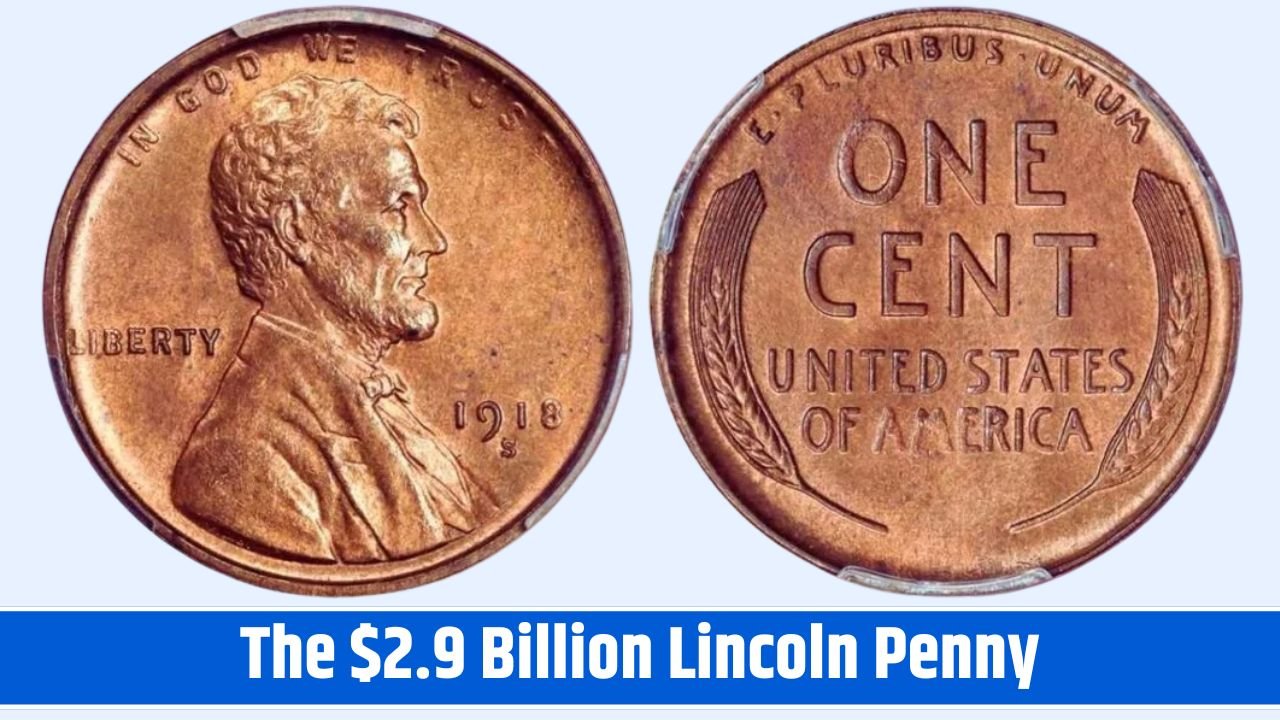Imagine discovering a humble penny in your pocket—only to learn it could make you a billionaire. It sounds far-fetched, but that’s the allure surrounding the legendary Lincoln Wheat Penny, rumored to be worth an eye-popping $2.9 billion. Though that valuation may lean into myth, it’s rooted in a real and fascinating piece of American numismatic history.
Let’s unpack what makes this coin so special, the facts behind the hype, and what you should look for before you spend your spare change.
The History of the Lincoln Wheat Penny
The Lincoln Wheat Penny was introduced in 1909, commemorating the 100th anniversary of Abraham Lincoln’s birth. Designed by Victor David Brenner, it was the first U.S. coin to feature a real person rather than an allegorical figure.
Its obverse showed Lincoln’s profile, while the reverse featured two wheat stalks, hence the name “Wheat Penny.” Produced until 1958, this coin has become one of the most collected U.S. coins ever minted.
The 1943 Copper Penny
In 1943, the U.S. Mint changed the penny’s composition from copper to zinc-coated steel to conserve copper for World War II. But a few leftover copper planchets from 1942 mistakenly made their way into the presses. These rare error coins became the 1943 copper Lincoln pennies.
Today, fewer than 20 verified 1943 copper pennies exist across all three U.S. Mint locations—Philadelphia (no mint mark), Denver (“D”), and San Francisco (“S”). Their extreme rarity makes them one of the most prized collectibles in the world of coin collecting.
Is the $2.9 Billion Price Tag Real?
Let’s be clear: no 1943 copper penny has ever sold for $2.9 billion. That number is pure internet myth, likely born from viral posts and speculative clickbait. However, these coins are genuinely valuable—some have sold for over $1 million at auction.
The hype, though exaggerated, underscores the coin’s historical importance and scarcity. The most famous specimen—a 1943-D copper penny—sold for $1.7 million in 2010.
How to Identify a 1943 Copper Penny
Not sure if the penny in your change is something special? Here are the key traits to look for:
| Feature | Copper 1943 Penny | Common Steel 1943 Penny |
|---|---|---|
| Color | Brown or reddish | Gray or silver |
| Magnet Test | Not magnetic | Magnetic |
| Weight | About 3.11 grams | Around 2.7 grams |
| Mint Marks | P (none), D, or S | Same, varies by location |
Use a magnet first—steel pennies will stick, copper ones won’t. If it passes that test, weigh the coin with a precision scale. Any serious find should be authenticated by a professional grading service.
Other Valuable Wheat Pennies to Watch For
Even if you don’t score the 1943 copper unicorn, several other Lincoln Wheat Pennies can fetch high prices:
| Year/Mint | Estimated Value (Top Grade) |
|---|---|
| 1909-S VDB | Up to $100,000 |
| 1914-D | Over $10,000 |
| 1922 “No D” | $1,000 to $10,000 |
| 1931-S | $75 to $2,000+ |
Condition, rarity, and demand drive these prices, so high-grade, uncirculated coins always command a premium.
Can You Still Find Wheat Pennies in Circulation?
Yes—though rare, valuable Wheat Pennies still pop up in circulation, old coin jars, and estate sales. Many collectors hunt rolls of pennies from banks hoping to find hidden treasures. The thrill of the hunt keeps interest alive in these historical coins.
Don’t Celebrate Until It’s Verified
Think you’ve struck gold? Before cashing in, send your coin to a reputable grading service like PCGS or NGC. These experts assess weight, metal content, and mint details to verify authenticity. Coins that pass inspection are encapsulated in tamper-proof cases with a certified grade.
Authentication not only proves a coin’s legitimacy—it significantly boosts its resale value.
The Lincoln Wheat Penny is more than pocket change; it’s a tangible piece of American history that captures a nation’s story through metal and minting. While the $2.9 billion price tag may be fantasy, the enduring excitement over rare Wheat Pennies is very real—and possibly just a coin away.
FAQs
Is there really a Lincoln penny worth $2.9 billion?
No official record supports this valuation. It’s more urban legend than reality, though real 1943 copper pennies are worth serious money.
What is the rarest Lincoln Wheat Penny?
The 1943 copper penny and the 1909-S VDB are two of the most valuable and rarest Lincoln Wheat Pennies.
How do I know if my 1943 penny is copper or steel?
Use a magnet—steel sticks, copper doesn’t. Also, copper pennies weigh about 3.11 grams.
Where can I get a rare penny appraised?
Contact reputable grading services like PCGS or NGC for expert authentication and valuation.







